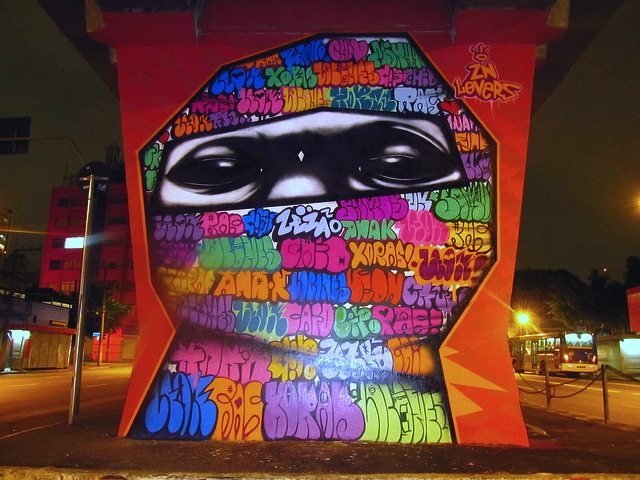
“Graffiti: where community and creativity connect,” said no government ever.

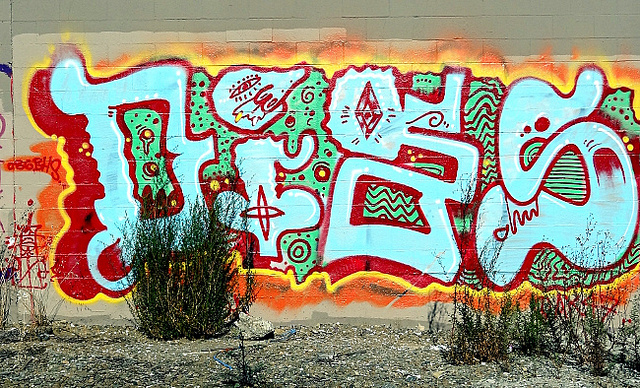
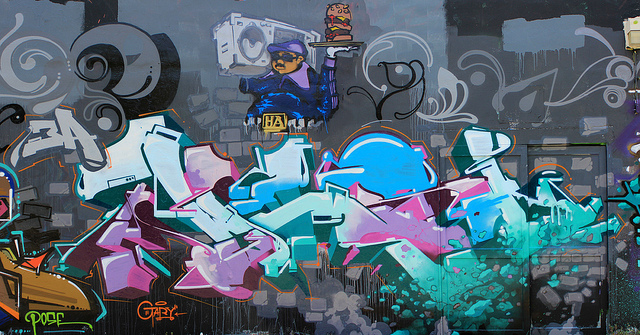
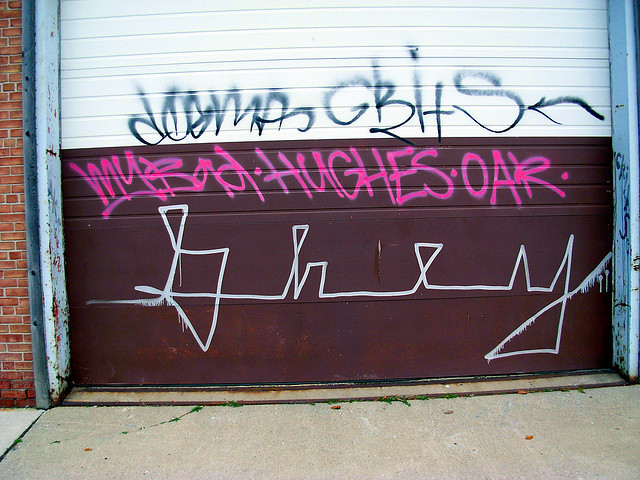
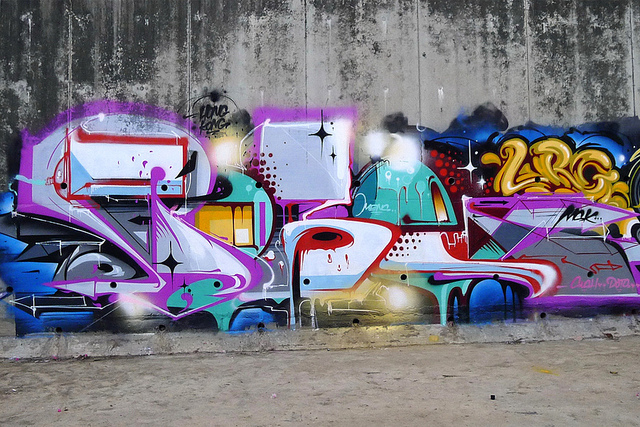
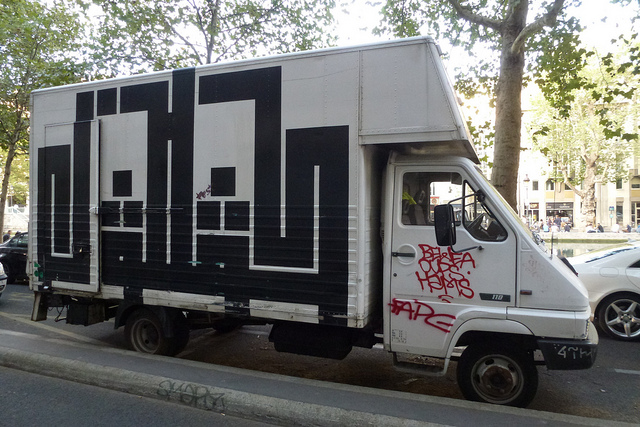
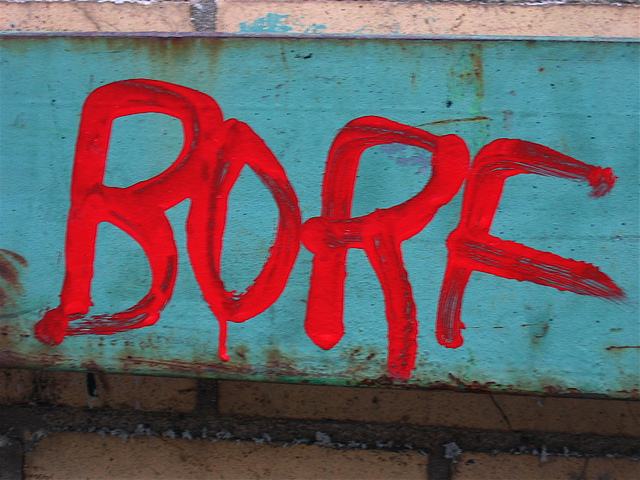
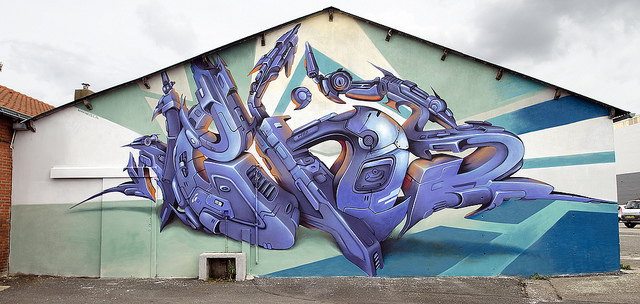
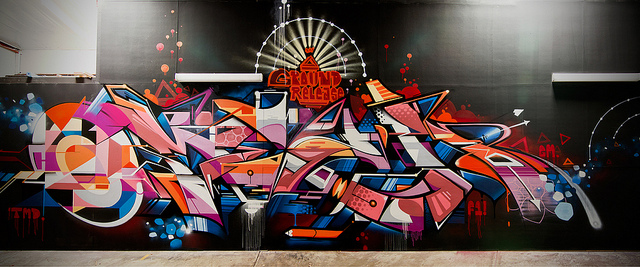
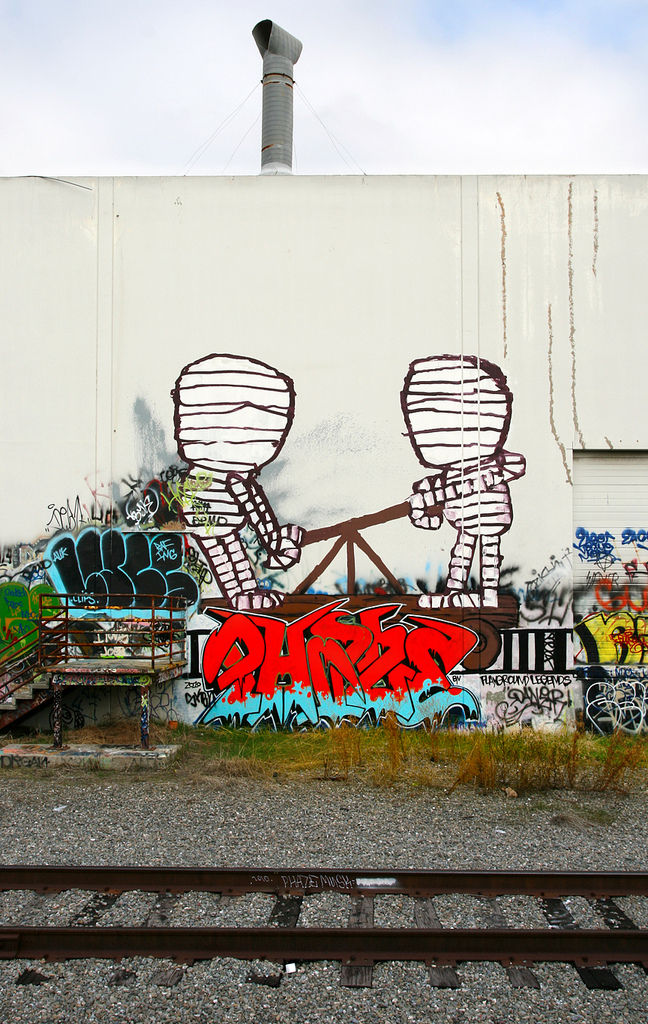
Photos by Billy Craven, ExcuseMySarcasm, Fabah Zadok, FunkandJazz, Heavy Artillery, Lepublicnme, Startape Photographe and thesaltr

“Graffiti: where community and creativity connect,” said no government ever.










Photos by Billy Craven, ExcuseMySarcasm, Fabah Zadok, FunkandJazz, Heavy Artillery, Lepublicnme, Startape Photographe and thesaltr
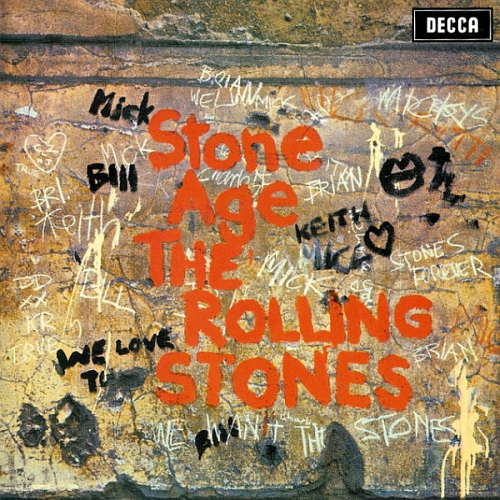
It’s a great pleasure to introduce my good friend (he DJ’d at my wedding), author and vinyl obsessive Mr Tim O’Brien. He and I share a love of a funky tune and the graffiti you find on record covers but Tim has done more research into the field than anyone I know. His physical collection of graffiti vinyl has to be second to none and through his numerous essential blogs it a subject he generously shares with the world…
– Tristan Manco
Hello, my name is Tim and I have a problem with vinyl…
The humble album cover tells the whole story of graffiti. From the earliest tags to the latest styles, the album cover has used them all. Any styles in-between, it’s used them too. Go into any record shop, search long enough and you’ll come across some graffiti-based album art. Look in any of the Hip Hop, Jazz, Rock, House, Indie, Electronica sections and you’ll find graffiti based album art. Look to some of the most famous artists of all time – James Brown, The Rolling Stones, The Jam, Run DMC – and you’ll find graffiti based album art. Go through the bargain bin and you’ll find disrespected tunes with great graffiti based covers. Don’t forget, if the owner/assistant/loiterer gives you a hard time, for some obscure and unfathomable reason, you can always get them elsewhere.


The first time graffiti album art caught my eye was in HMV, Oxford Street, in the late 80s. The shop was clearing out their vinyl and in a back room they had rows of Ultimate Breaks & Beats LPs. The artwork really captured my imagination, classic as it was and is. Straight away I loved the colours, design, themes and styles and have done ever since, the music on the LPs too. HMV were switching to selling CDs of course. 25 years later and CDs are on the way out, vinyl is still going strong and the Breaks & Beats series looks as fresh as ever.
The inspiration for these blogs came courtesy of a lucky break/some small success with the publication of Naked Vinyl in 2003, thanks to Chrysalis Publishing. For a while I was on the same label as Blondie, kind of and it was a fun time. The graffiti vinyl blogs followed from there and are well on the way to becoming a follow up book in their own right. This is pleasing in lots of ways, firstly because computer servers don’t destroy enough trees for my liking and also because album art is such a great way to showcase the ongoing creativity of graffiti/street art.

The best thing about graffiti vinyl is that it includes artwork by classic artists like Futura, Seen and Keith Haring, plus lots of different graff/street art styles, and lots of modern graffiti based design too. While, I’m happy to say, the Thames & Hudson titan of street art, our very own Mr Tristan Manco, has designed (with the artwork of Banksy and others) his own graff vinyl covers too. These come courtesy of his freelance design work and are pictured here in all their glory.


Most of the covers were bought in the UK or online. With special mentions going to the Notting Hill Soul & Dance Exchange, Rarekind Records, Brighton, West Pier Records, Brighton and FOPP, Cambridge. The mighty Worldwide Empire of Discogs is, of course, due a mention too. Some of the vinyl was, and is, pretty pricey and a few of them I still haven’t been able to find – the, stunning, graffiti picture sleeve of Tyrone Brunson’s The Smurf and the Trouble Funk, 7”, graffiti picture sleeve, of Pump me up, spring to mind. So, if you’ve got them, please send them on to Vandalog for safe-keeping.
The graff blogs created include three themed around graffiti vinyl – an overview with info and links, a gallery and the story of graffiti vinyl:
Graffiti Vinyl – A Tag-time Story
Plus one that’s about graffiti’s place in relation to design and wider culture:
These compliment the original Naked Vinyl and Naked Vinyl gallery blogs:

Some of the above blogs are archives and complete, while others will have content added on an on-going basis. Finally, if you get a chance to check my google blogger profile, you’ll find some more blogs based around other left-field themes. New blogs will be likely added as inspiration strikes.
Photos courtesy of Tim O’Brien
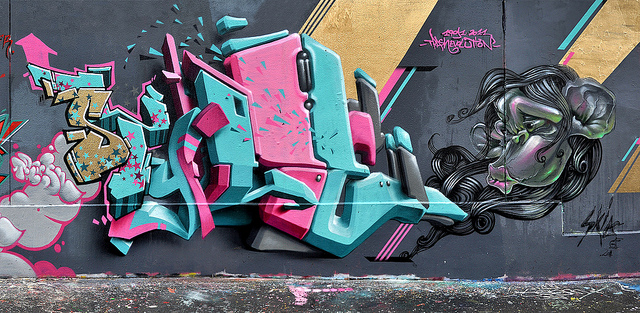
Make your mother proud.
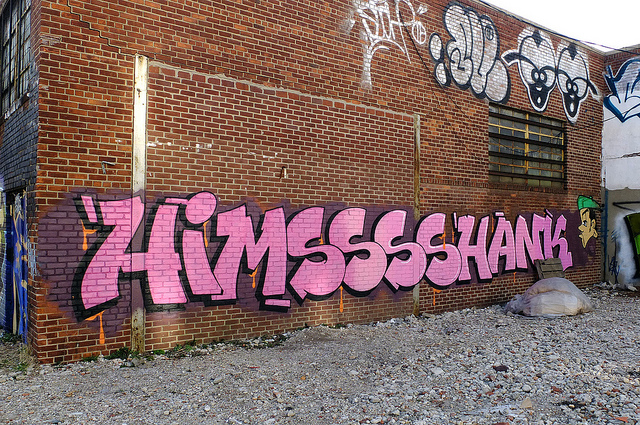
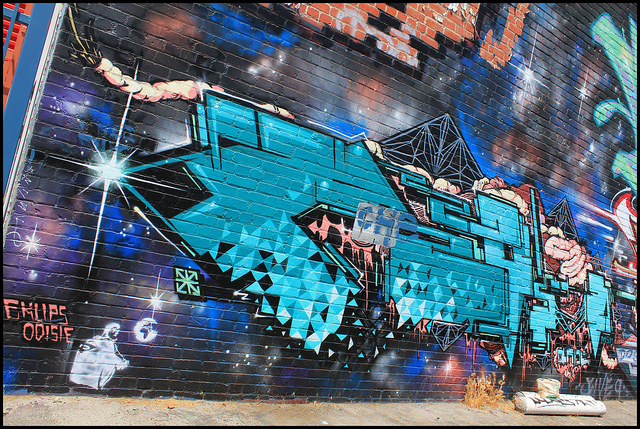
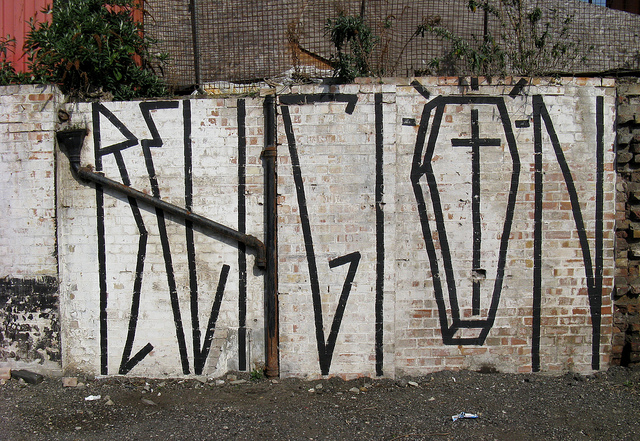
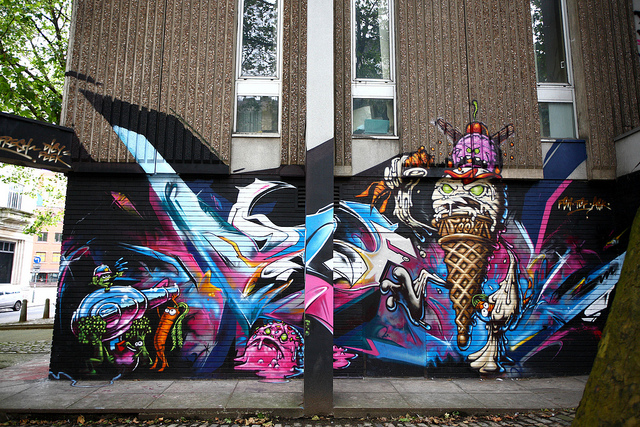
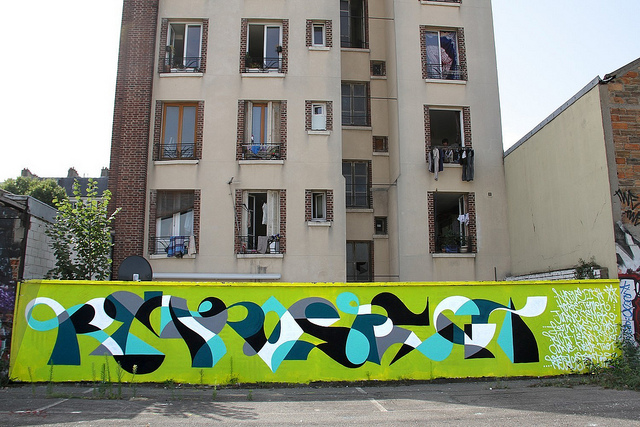
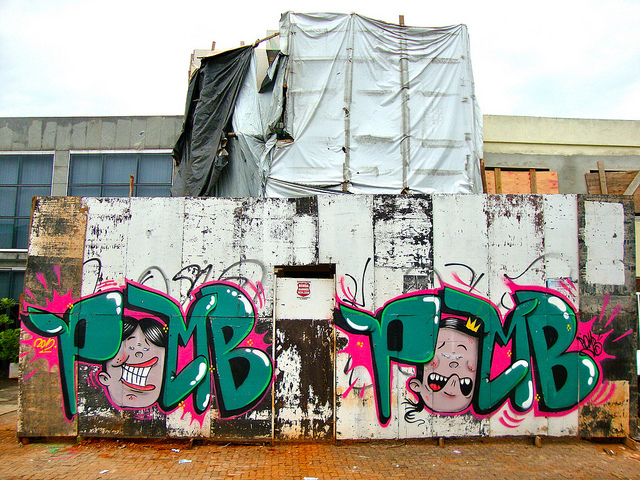

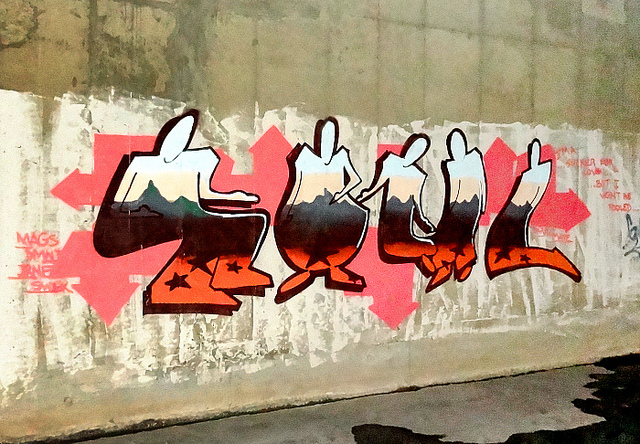
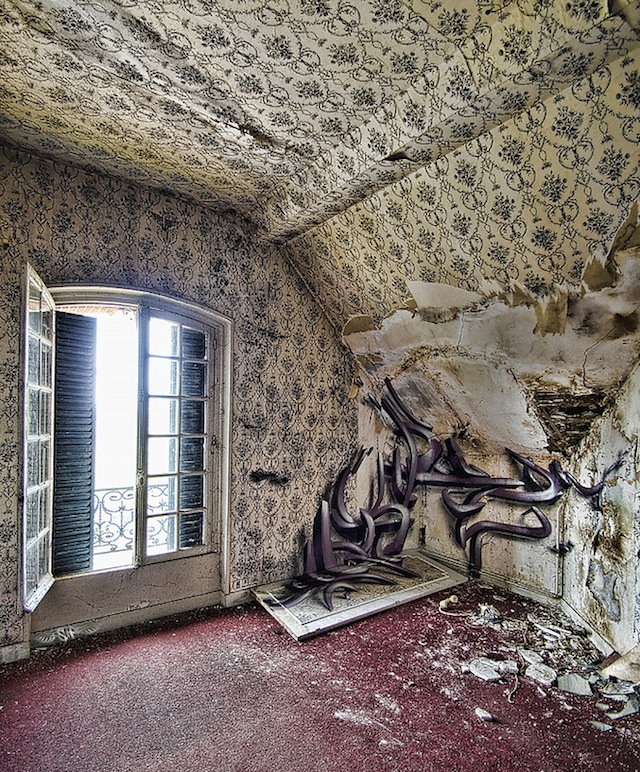
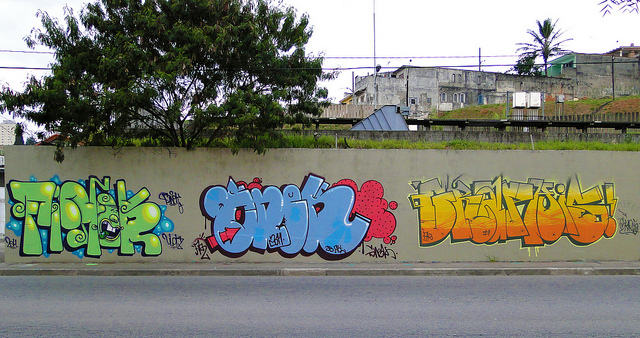
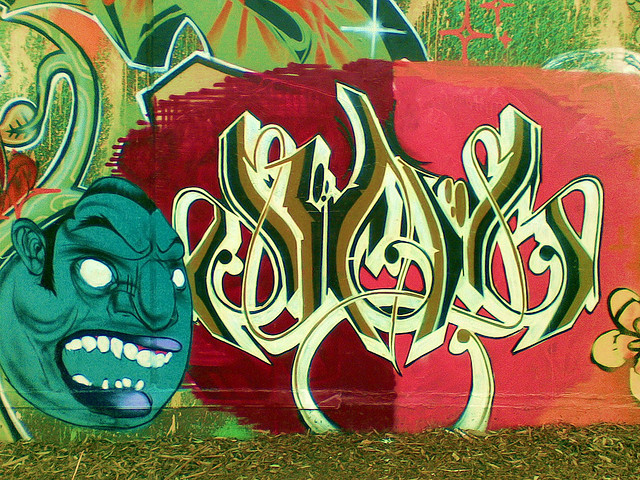
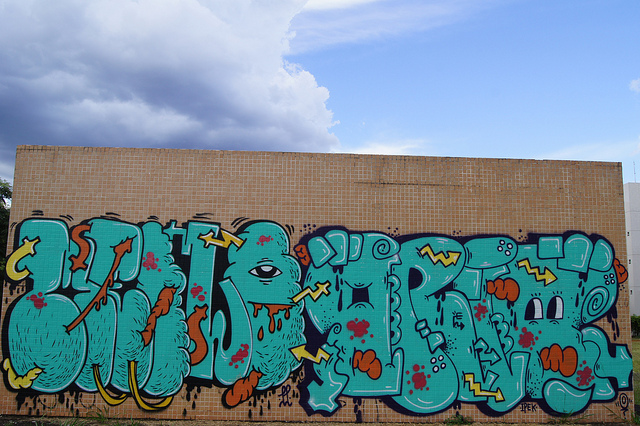
Photos by 4foot2, Big Bozo, Damonabnormal, FunkandJazz Graphis, Morac19, P. Matheus Lacerda, Tha Sieg Monsterrr, SOKE, Startape Photographe and ThalesFernando
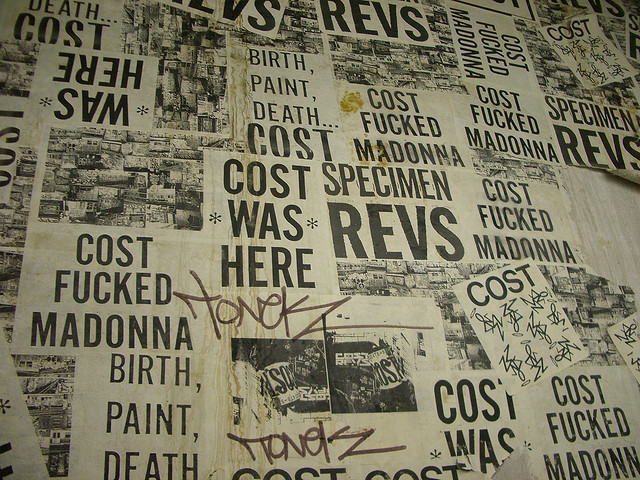
You know him. Rudy Giuliani knows him. At one point, half of the city thought Madonna knew him biblically (for more on that subject, hold your breath for Part two). COST has been ubiquitous in New York City since the late 80’s. He and his counterpart REVS are two of the most widely recognized characters in graffiti and have produced some of the longest running pieces in New York. Nothing captured COST and REVS’ domination of New York in the 90’s better than this Videograff video which asks “Is this art or dangerous propaganda?”
After working under the radar for a number of years after his 1994 arrest, COST has participated in a select few projects with brands such as Brooklynite, Showpaper and Supreme since the fall of 2010. Within the last few months, you may have seen the name COST appearing around New York City again. Despite this, he’s let the work speak for itself and shied away from the spotlight. Vandalog is pleased to publish the first major interview with this reclusive graffiti legend since his 1994 interview with Art Forum. In part one of this interview, COST discusses getting arrested, his hiatus that followed, doing graffiti against the grain and his resurgence among the latest generation of street artists.
V: Why haven’t you tried to make yourself a presence on the internet?
COST: I stay off the internet. The internet is like poison. It really is. I don’t want my face on the internet. There’s a lot of misinterpretation. Anyone can be anyone, say anything. On Facebook there are two people who are posing as me. Things like that make me, I guess, bitter toward the internet.
It’s a good way to connect, that’s true. But I think true graffiti artists have a disconnect with a lot of things in this world. At least I do. I stay disconnected- try to stay disconnected from a lot of stuff and that’s part of why I try to stay off the internet as much as I can. I mean, I’m on a little bit, but there are people out there creating a whole graffiti world on the internet; websites and storylines, bios, all that. They’re selling themselves on the internet and I don’t want to do that.
V: During your wheatpasting campaign the posters that had a phone number received a lot of attention. To be general, why did you do this? And do you think that was the 1993 version of putting, say, “www.COST.com” up like graffiti artists are frequently doing today?
COST: During that time period nobody was doing it. That was a way for the public to contact us. You know, get a little feedback on the shenanigans we pulled around the city. We were having fun, trying to keep it pure and doing what we wanted to do if it felt right at the time and hopefully – maybe not now, but then it was a different thing than what everybody was doing. We were speaking out to the public. So the phone number was kind of like an opportunity for the public to respond or reach back to us and say things. And they had a lot to say.
V: I mean, it is kind of intimidating to see a phone number on a wheatpaste. You don’t know why or why not to call it, or what to be ready for. I dialed it but got nothing.
COST: Well it’s nothing now, but we used to change it up about once a week. Rudy Giuliani was the mayor and he was trying to clean up New York, and obviously if you look around New York now it’s a different town. He cleaned it up. But on the voicemail we went on political rants, spoke about art, philosophy, whatever was on our minds. We spit it out onto the voicemail and it was freedom of speech. That was the beauty of it. We were saying what we wanted, when we wanted and anyone could dial in – for what? ten cents? – Whatever a payphone cost at the time. You never knew what you were gonna hear on it. If I had a bitter day and I was a bitter guy that day and I had something to say about it, I would say it. We didn’t hold back. We said what we felt and what was true to us, REVS and myself. Initially a few people called and before you knew it, thousands of people were calling a day. It kind of got a little out of hand. Checking in on the voicemail, we got everything from death threats to marriage proposals to people telling us to just get a life.
V: What did you think of that?
COST: Some of it was inspiring. Some of it was… some of it would make us go out and do more, you know? It added fuel to the fire. We were young, in our mid twenties – a very rebellious age. I’m 43 now, you get older and mellow out a little bit. We were young and rebellious so we wanted to vent and to tell the city that we didn’t like how it was being run and wanted to switch it up a little bit. We wanted to mix things up, add a little flavor, switch things around. I’m glad people recognize that now.
The funny thing is that now that there’s an international street art boom, it’s like people are remembering it a little more, but at the time it was almost looked down upon. During that time period a lot of people didn’t like what we were doing. They didn’t consider it art because it was very um… neanderthal.
Graffiti at one point got so perfect where everybody was doing perfect lines and the art was so over-perfected. If somebody did a perfect line, we painted a drippy line that dripped everywhere.
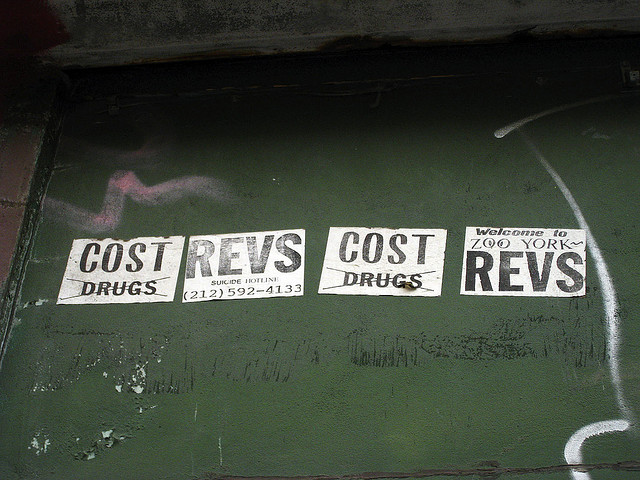
V: Intentionally?
COST: Yeah. We were doing everything against the grain. We just went against the grain of every graffiti and street art standard of the time. A lot of people were very angry that we were prolific. We were out there every night almost. I would say we were putting pressure on the graffiti scene and the street art scene to question what we were doing. And some of them were upset, you know? Because we were changing the rulebook. I don’t know if we were trying to, we were just doing what felt right. Now there’s a whole new rulebook and now people look back say (I’m not here to toot my own horn) but they say “Oh, you guys did good things and helped influence all the street artists now.” And I’ll take it as a compliment.
V: What kept bringing you back? Every night you kept doing this. What was attractive to you about it?
COST: I can speak for REVS on this as well: Neither of us did graffiti for the love of graffiti. It was more like we actually didn’t like it. We probably hated it. It was just self-expression and it was pure. We were just pouring our heart and soul into the streets, and people can take it or leave it. A lot of people didn’t appreciate it then. But now a lot of people look back and -you’re interviewing me so at least Vandalog, or somebody, recognizes that what we meant was true. I hope you can print that. What we did was true, was being true to ourselves. I’m not sure all the street artists are being true to themselves. They see one mural and someone does a mural just like it. I don’t mean to be critical, there are a lot of talented artists out there. Much more talented than me. But do they have something to say? And that’s really what I question. When I look at art, it has to speak to me. If it doesn’t speak to me than what is it? A beautiful portrait? If you said, “Paint me a portrait,” our waitress will paint a better portrait of you than I can. You know what I mean? It’s about the art. The art needs to speak to you, it needs to move you.
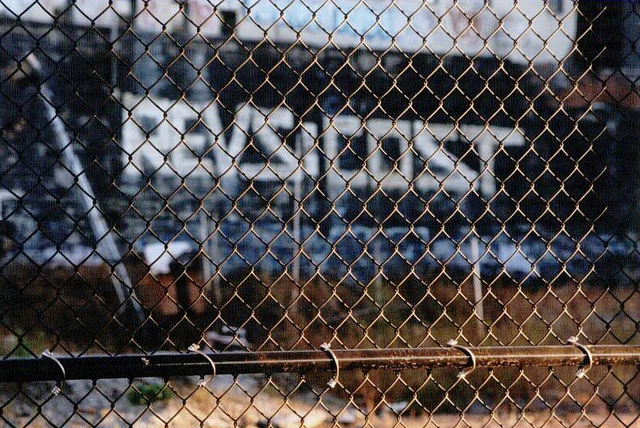
V: How did the release of your identity after you were arrested affect your personal life as well as your graffiti life, which had before been separate?
COST: It made me go deeper undercover I guess. I crawled into a shell and laid lower than the outlaw Jessie James. All of a sudden people who didn’t know that that was me put two and two together. You don’t want people knowing who you are. The idea was to do graffiti, and the idea behind graffiti was to get your name out there but for others to wonder who the heck was doing it. I never did it for a social purpose. Or a financial purpose. I did graffiti for myself and my cohorts and my crew and that was about it. And once my name got out there, it was exploitation in a sense. That’s how I looked at it. It was pretty harmful. But now that the street art/graffiti culture is so accepted, there’s been less hate and more embrace. So I’m not complaining.
V: Had you done any painting at all during that time?
COST: For the first 5 years after being arrested, I was on hiatus. After that, I painted off and on but it subsided. It felt like I lost my way, like they pushed me out. It’s almost like you choose paths in this life and I wound up going down a different path, and now I really regret it. I feel like I only have about 20 or 25 years to live, I figure 65 years old, anything past that is a blessing. People live longer, but you know what I mean. So I figure with 25 years left to live, anything that I’ve done up to this point since my heavy street art days have been so unfulfilling that I’m going back to street art. I’m willing to sacrifice everything in my life otherwise, at this point. That’s why I’m going back to painting and producing work, because all the money in the world doesn’t give you uh…. what’s the word.. I forgot the word. Shit. You gotta do what feels right in this world and I gotta get back to my painting.
Continue reading “Vandalog interviewed COST – Part one”

A note from RJ: Luke left the show before this stuff happened. If anyone knows more about what went on, let us know in the comments.
Lush a renowned “so called” graffiti artist from Melbourne, Australia, opened his show tonight at Klughaus Gallery in NYC.

As usual his work is controversial and rather obscene :)… Lush’s graffiti pieces combine his trademark lettering with often x-rated images of pornography and naked women posing alongside (and incorporated into) his pieces. I really like his work.
His illustrations (the feature of this show) provide a very apt commentary on the graffiti scene and all the associated traditions and beliefs.

Lush wasn’t at the show (maybe because he’s probably a wanted man haha), but, in what I thought was an innovative addition to the show, he appeared live on Skype from Melbourne (donning a bandana to cover his face) from his bathtub. This was an excellent addition to the exhibit as it allowed people at the show to interact with the artist. He was also live in twitter and @lushsux and the #lushsux hash tag were getting lots of attention. Both positive and negative.

The good thing about Lush is that he does not at all take himself seriously and his work completely “takes the piss” (an Australian saying meaning makes fun of) the whole graffiti and street art scene. A much needed viewpoint in my opinion.
The show opened tonight and runs until the 7th of September. Worth having a look at if you are in New York.
All photos by Lukey
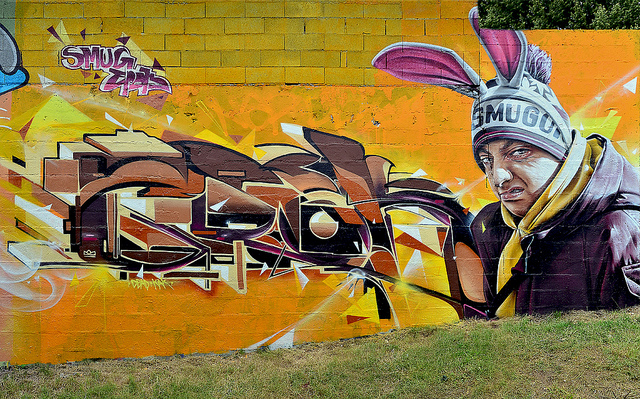
Drips for days.
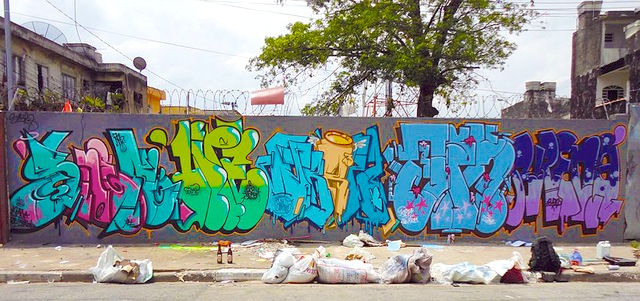
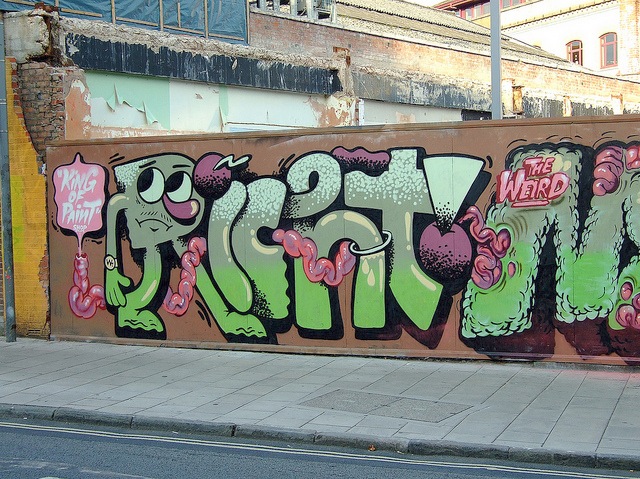
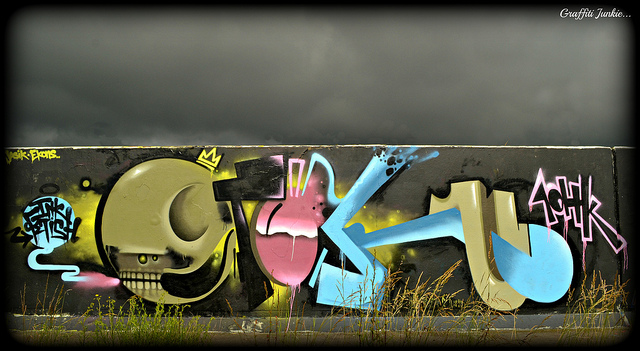
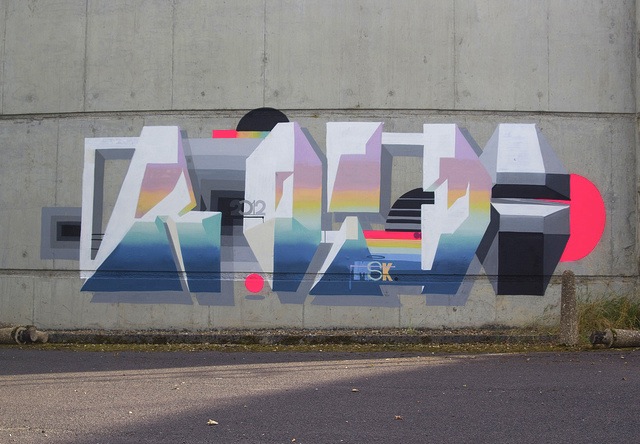
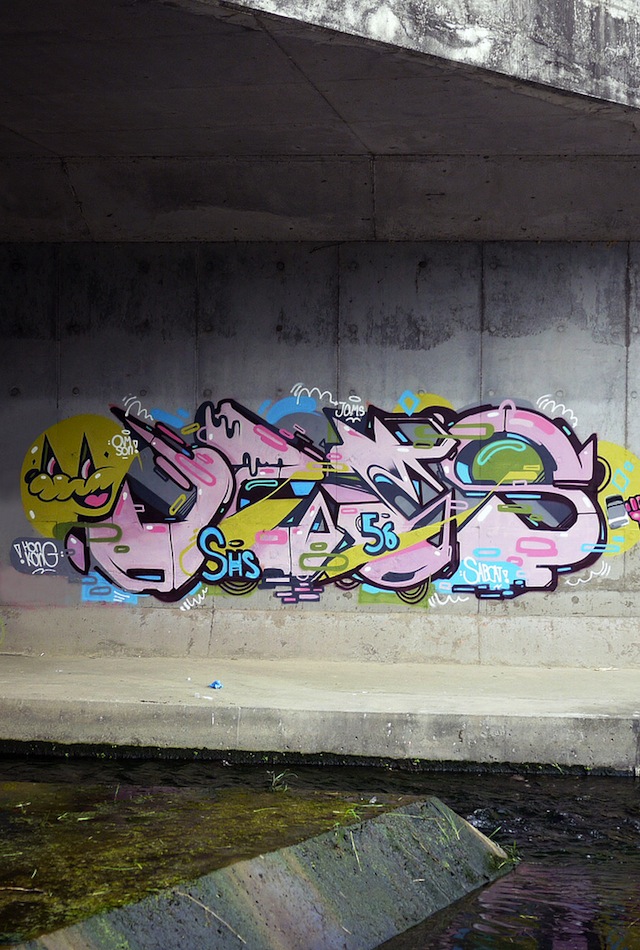
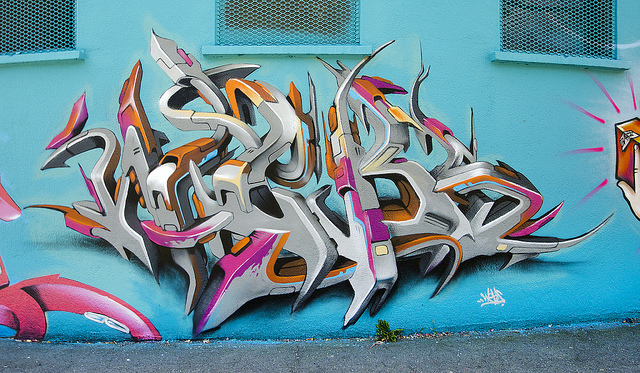
Photos by FuckSabcat – HongKong, Graffiti Junkie, Graphis1, Heavy Artillery, Richt, Saner KGB and Startape Photographe
Sometimes when I’m making these Wild Style Wednesday posts, I have a difficult time deciding whether I can include a piece because I can’t distinguish if it is “graffiti” or really just “street art”. For some reason, that matters. I ask myself questions like “Does the work have arrows?” “Is there reference to a 3-letter-name graffiti crew?” “Was this done with a legitimate risk of arrest?”
Instead of WSW this week, I’ve decided to compile some photos that didn’t make it into a previous WSW post, and assign them to more fitting ‘subcategories’ of graffiti/street art.
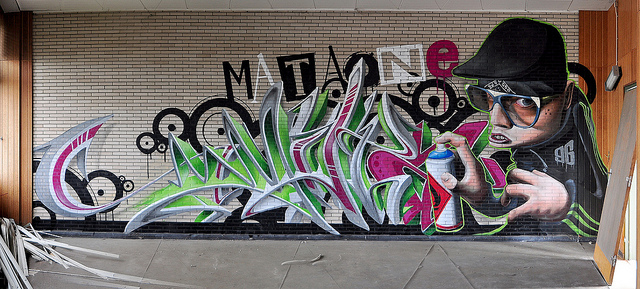

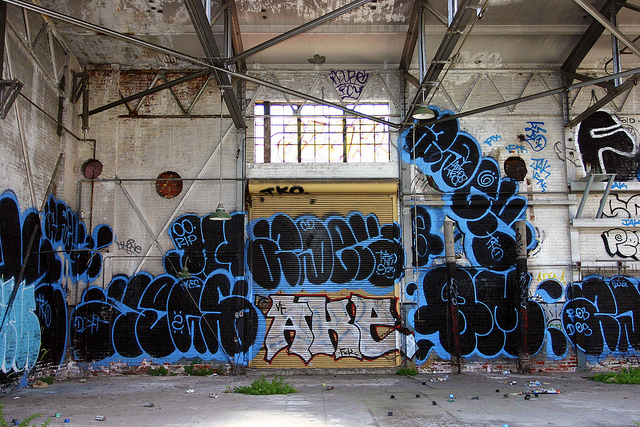
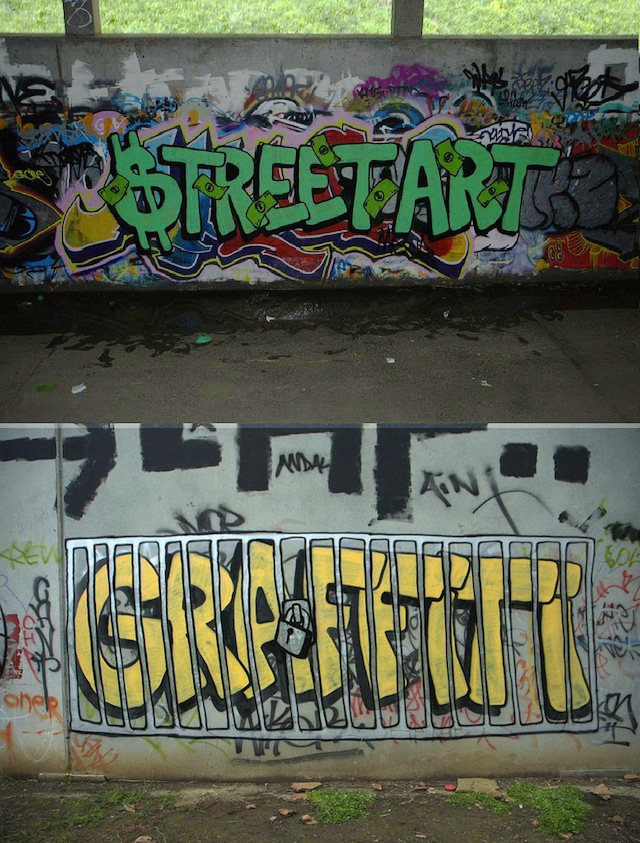
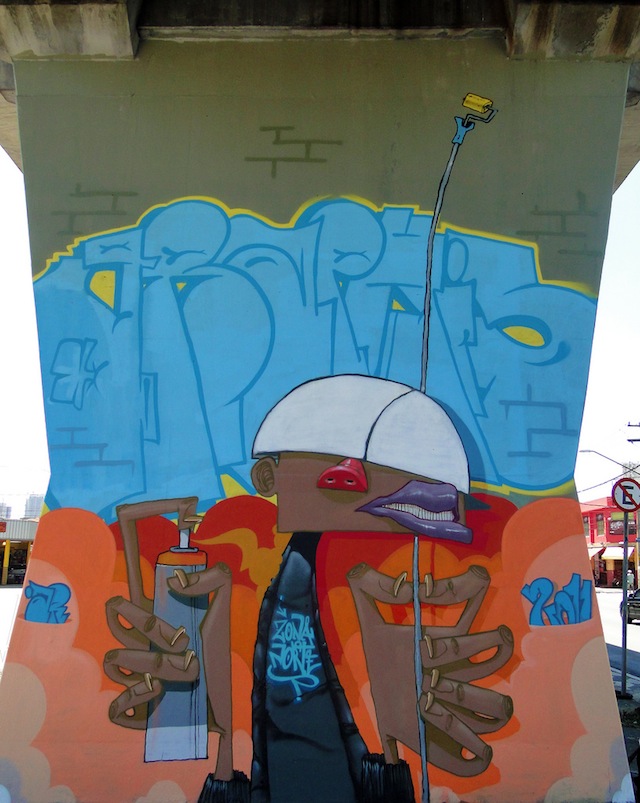
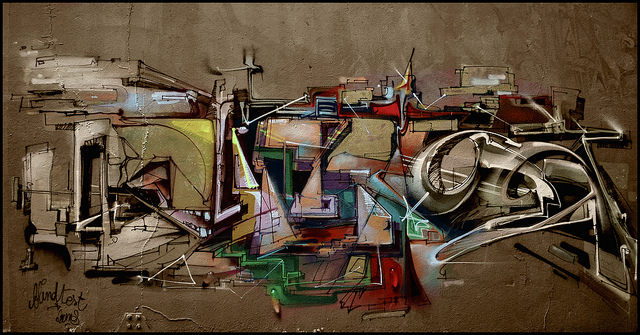
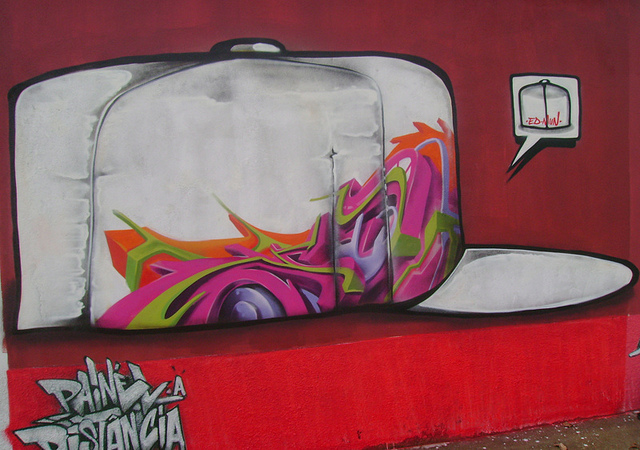

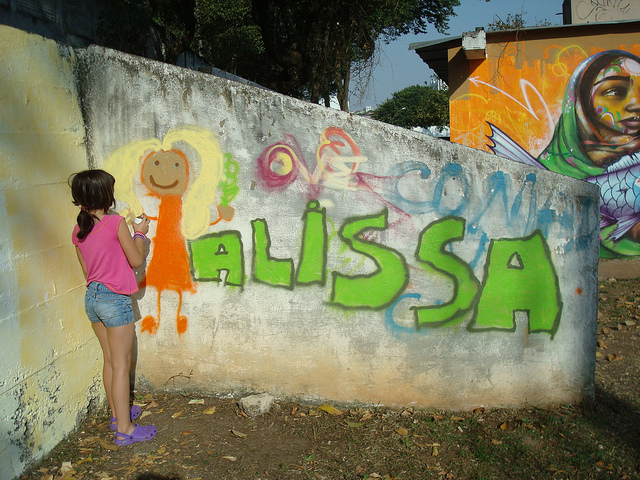
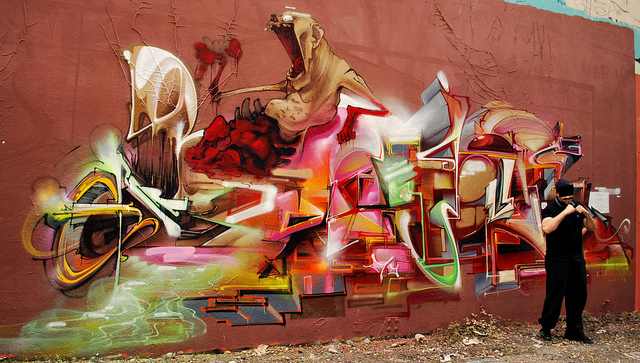
Let’s play a game.
VIEWERS DECIDE FIVE: Street art? Graffiti? Subcategory?
1.
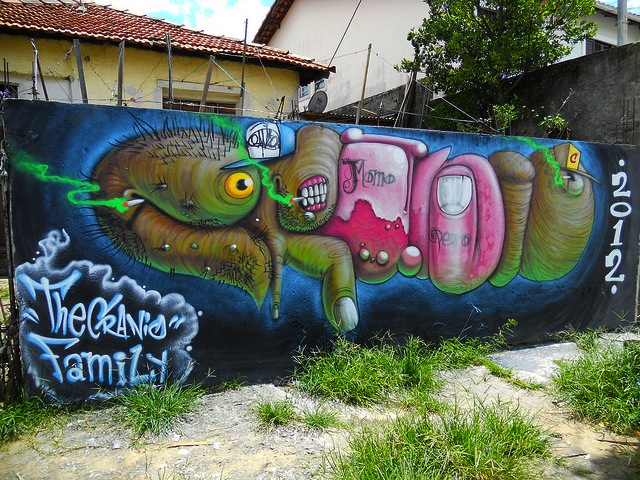
2.

3.
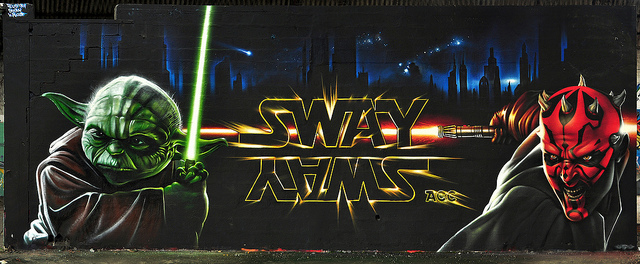
4.
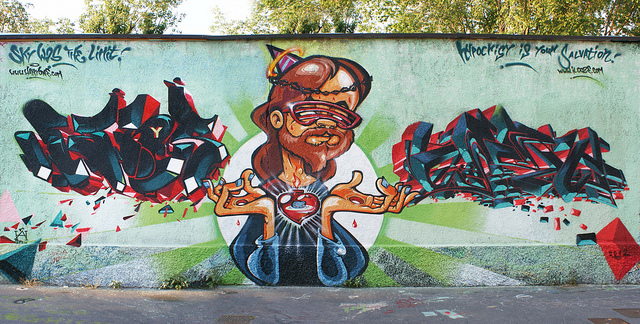
5.
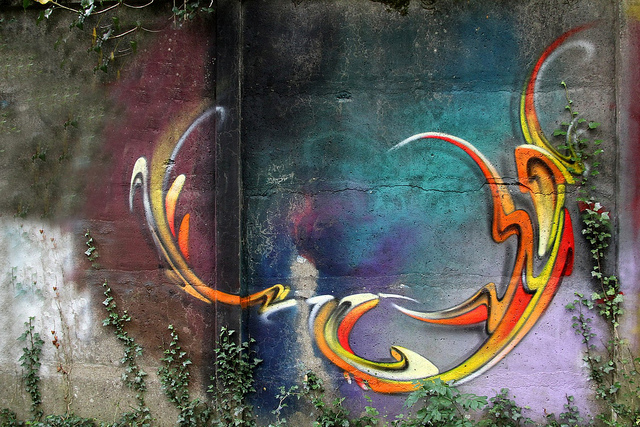
Photos by Cranio, Ed Mun, FunkandJazz, GhettoFarceur, Graphis1, Heavy Artillery, Merciful Fate, Nardstar and Startape Photographe

For sheer fun, few exhibits I’ve seen this summer surpass “Cause and Effect” at 211 Franklin Street in Greenpoint, Brooklyn. Curated by UR New York (2ESAE & SKI) and Tone MST, it features works in various genres by a range of artists whose works are seen on NYC streets. Graffiti and street art meet here and fuse seamlessly – sometimes within the same pieces. Here are a few more images:



The exhibit continues through August 22nd.
Photos by Lois Stavsky
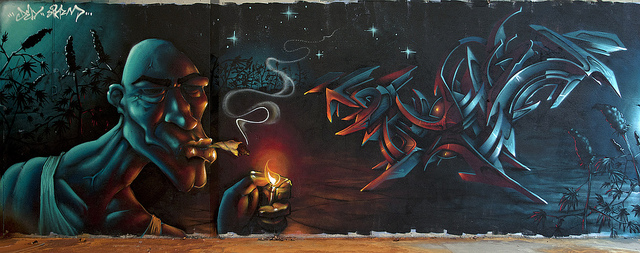
It’s that time of the week.
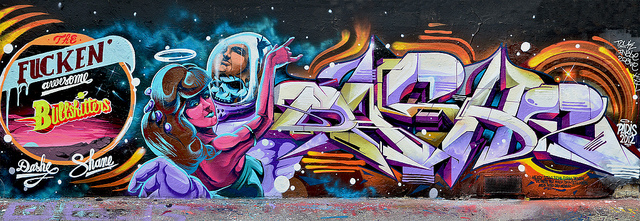
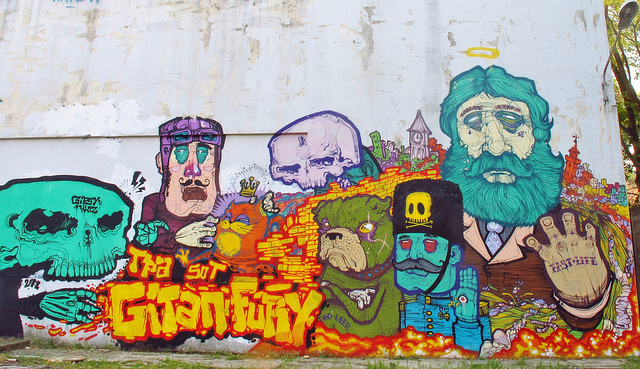
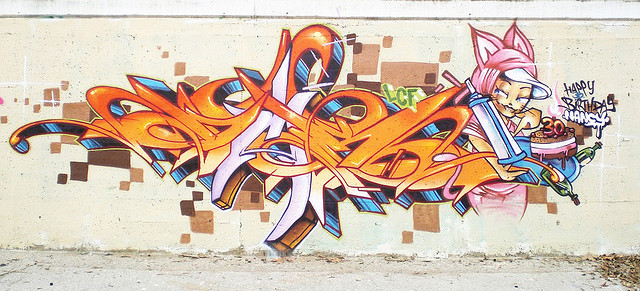
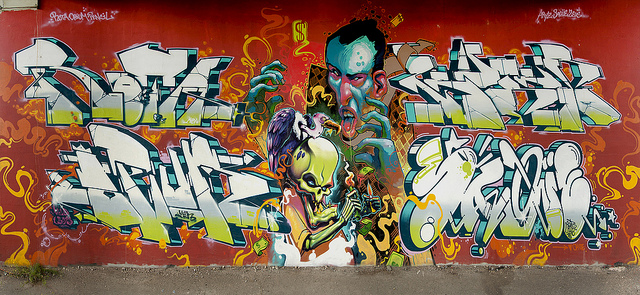
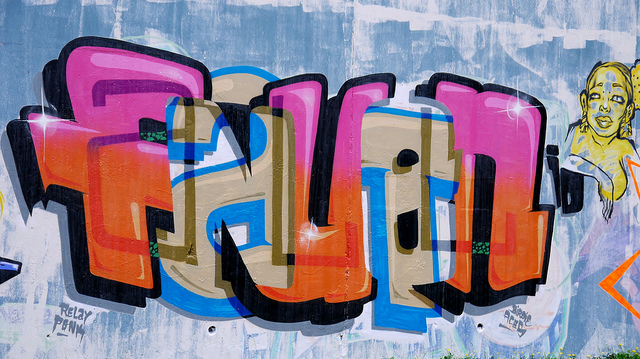
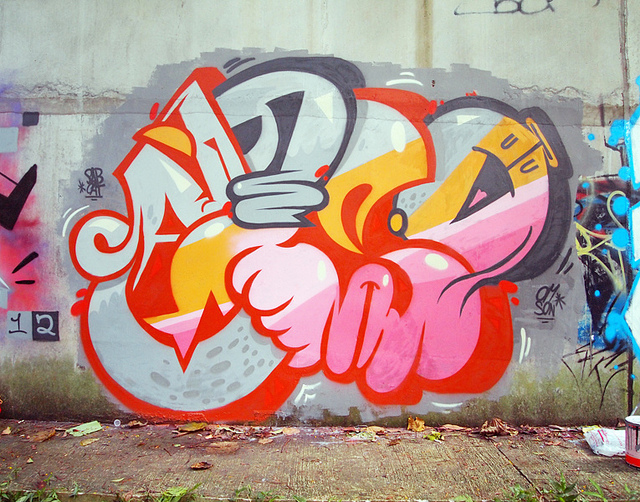
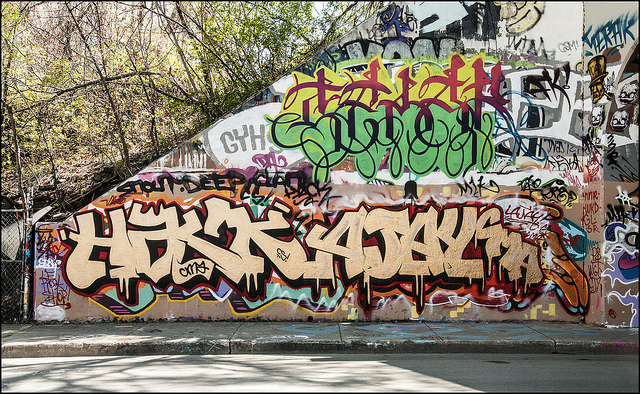
Photos by DosLCF, FuckSabcat – HongKong, GhettoFarceur, John19701970, Photofil and Startape Photographe

Art for money’s sake. Graffiti for ego’s sake.
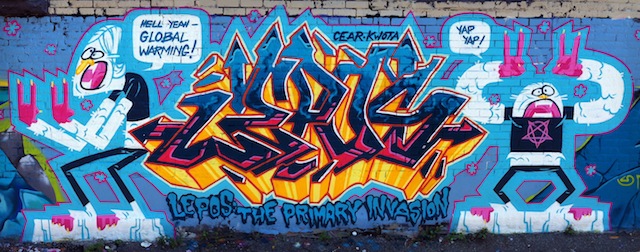
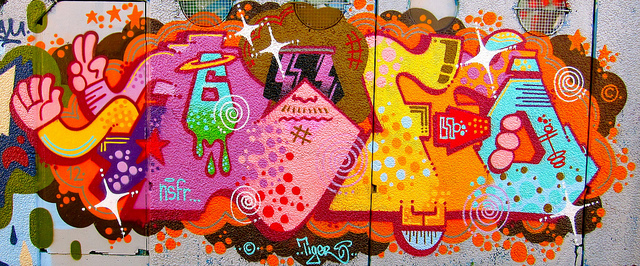
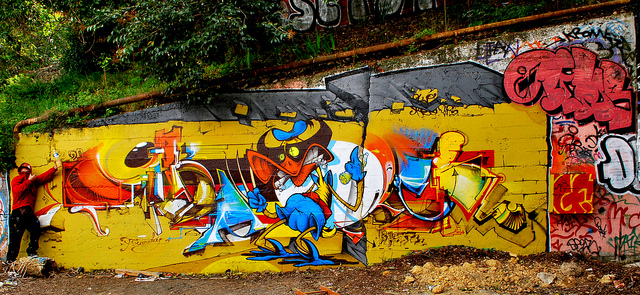
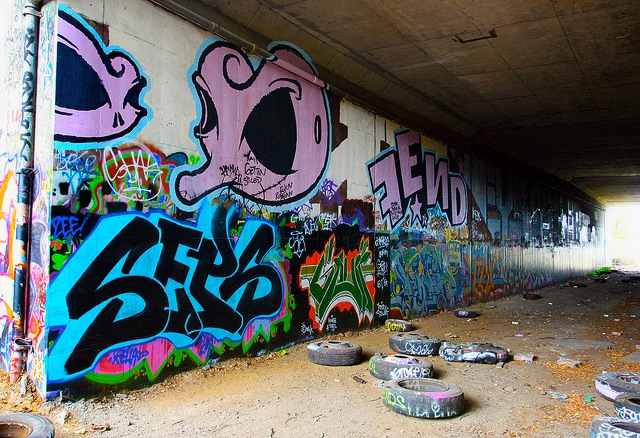
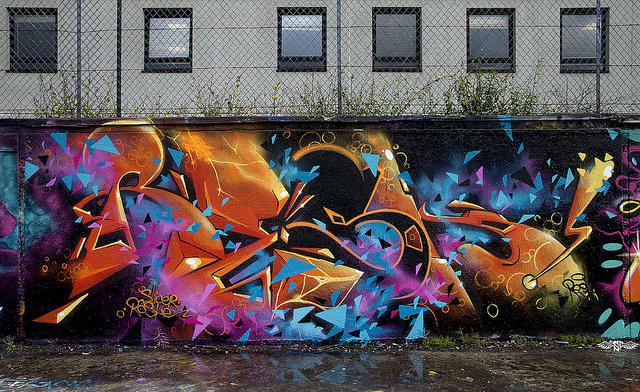
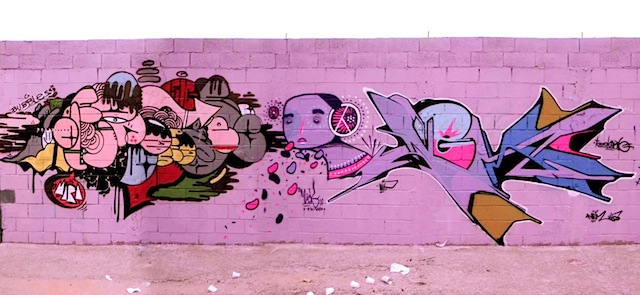
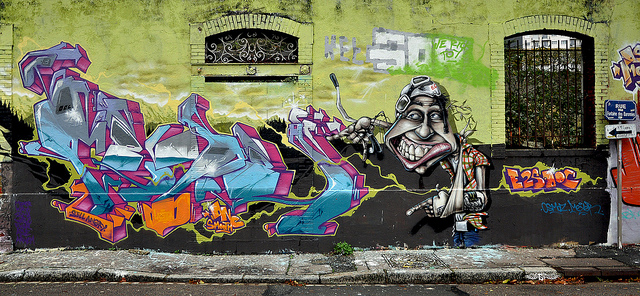
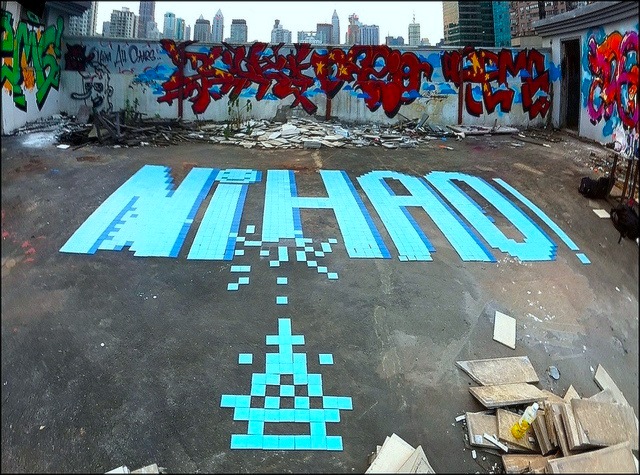
Photo by Baddogwhiskas, Dezio One, FunkandJazz, GhettoFarceur, Graphis, Gris One, Lepos, ‘N’ and Startape Photographe